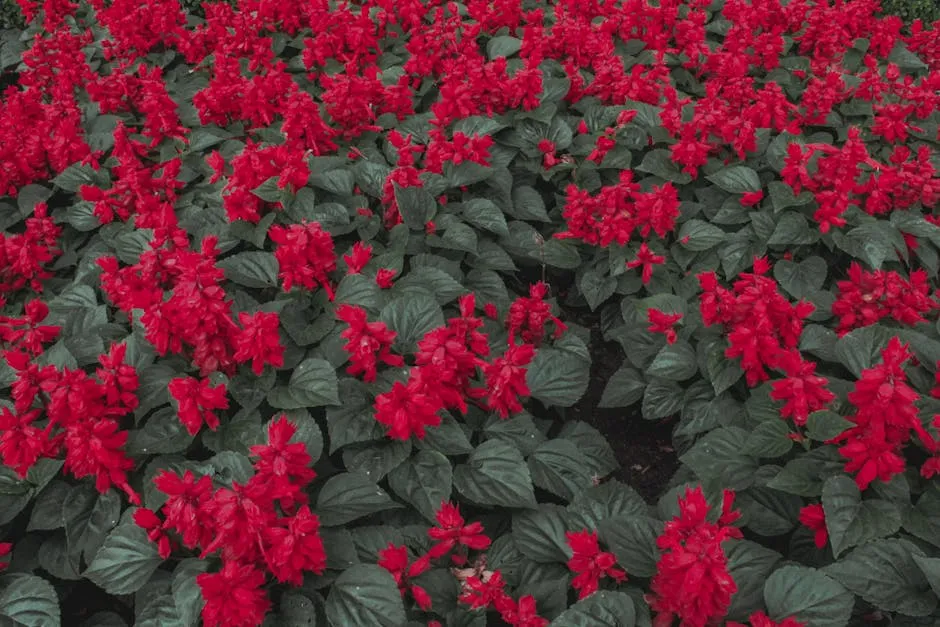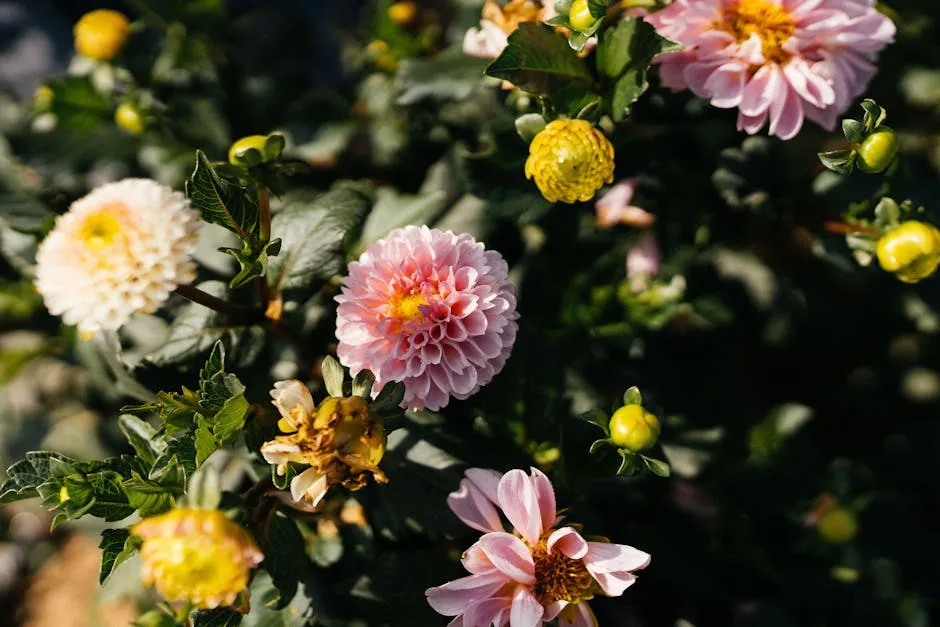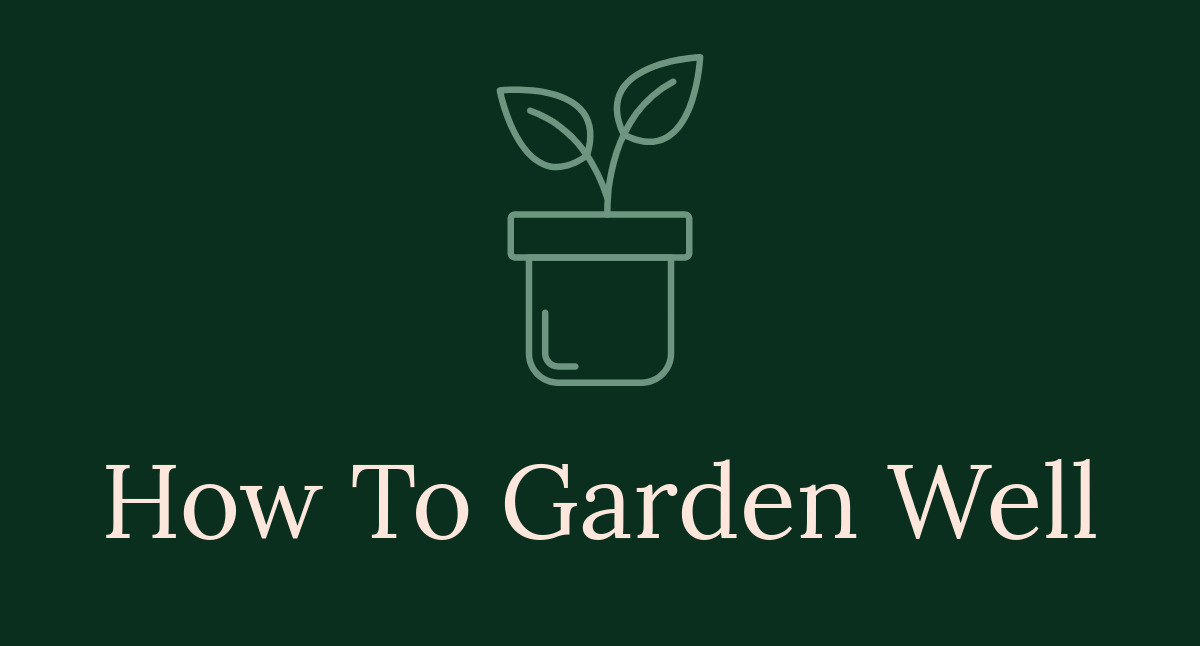

The Ultimate Guide to the Salvia Plant: Beauty, Benefits, and Best Practices

Lesser-Known Varieties
Salvia offers a delightful variety of lesser-known types perfect for spicing up any garden. One standout is Salvia azurea, also known as Pitcher Sage. With its elegant sky-blue flowers, it towers gracefully at heights of 3 to 5 feet. This beauty blooms from late summer to fall, providing color when many others are fading. It’s a magnet for pollinators, making it a fantastic addition to any wildlife-friendly garden.
Another gem is Salvia apiana, commonly referred to as White Sage. This evergreen sub-shrub features silvery leaves and striking white flowers that create a stunning visual impact. Historically, it has been used in various traditional ceremonies and offers a lovely fragrance when brushed against. Plant it in well-drained soil and enjoy its beauty and cultural significance.
If you’re looking for something more unusual, consider Salvia clevelandii, or Cleveland Sage. This aromatic beauty thrives in sunny spots and produces lovely blue flowers that attract hummingbirds like a magnet. It’s drought-resistant and perfect for low-maintenance gardens, proving that beauty doesn’t have to be high maintenance.
Each of these unique varieties brings something special to the table. Whether it’s their stunning color, delightful fragrance, or historical significance, lesser-known salvias are fantastic choices for an enriched garden experience.
Companion Plants
Creating a thriving garden ecosystem means pairing salvia with compatible plants. Consider mixing salvias with Echinacea, commonly known as coneflower. Their contrasting colors and shapes make for a visually stunning display. Plus, both plants attract pollinators, making your garden a buzzing paradise.
Rudbeckia, or black-eyed Susan, is another excellent companion. Their bright yellow flowers beautifully complement salvia’s vibrant hues. This duo thrives in similar growing conditions and offers a long blooming season, ensuring your garden remains lively.
Don’t forget about Nepeta, known as catmint! This fragrant plant pairs wonderfully with salvia, providing an enchanting aroma while attracting bees and butterflies. Their soft, grey-green foliage makes a lovely backdrop for salvia’s bold colors.
Lastly, Achillea (yarrow) deserves a mention. Its flat-topped flower clusters enhance the visual appeal of salvias while thriving in similar soil conditions. This combination creates a layered and dynamic garden space.
By thoughtfully selecting companion plants, you can cultivate a vibrant, harmonious garden that delights the senses and supports local wildlife. Your salvia plants will thrive alongside these wonderful companions!
Addressing potential challenges in growing your salvias can be crucial. For tips on how to overcome common challenges in growing exotic fruits in temperate regions, be sure to check out this resource.
Oh, and speaking of garden care, don’t forget the essential tools! A Garden trowel set is an absolute must-have for digging, planting, and even some impromptu gardening therapy!
Please let us know what you think about our content by leaving a comment down below!
Thank you for reading till here 🙂
All images from Pexels

The Uses of Salvia
Attracting Pollinators
Salvia is the ultimate party host for garden pollinators. Its vibrant, nectar-rich flowers are like a five-star buffet for bees, butterflies, and hummingbirds. These little creatures buzz and flutter about, making your garden come alive. In fact, many gardeners specifically plant salvia to attract these beneficial visitors.
The bright colors of salvia blooms, ranging from electric blues to fiery reds, act as beacons for pollinators. Bees are especially fond of the flowers, as they provide essential nectar and pollen. Butterflies enjoy the feast too, flitting from flower to flower. And let’s not forget the hummingbirds! They are drawn to the tubular shapes of salvia flowers, making them a delightful sight as they dart around your garden.
By incorporating salvia into your landscape, you create a vibrant ecosystem that supports local wildlife. It’s a win-win situation: your garden flourishes while you enjoy the sights and sounds of nature.
Culinary Uses
Salvia isn’t just a pretty face; it has a culinary side too! The leaves and flowers of certain salvia species, particularly Salvia officinalis or common sage, are widely used in cooking. The aromatic leaves bring depth to various dishes, especially in Mediterranean cuisine. Toss some fresh sage into your roasted meats, or steep it in hot water for a soothing herbal tea.
But wait, there’s more! The flowers aren’t just for show. They can be used to garnish salads and desserts, adding a pop of color and flavor. Imagine a refreshing summer salad adorned with delicate salvia petals—it’s an eye-catching and tasty treat!
For those who love experimenting in the kitchen, salvia offers endless culinary possibilities. It’s a versatile ingredient that elevates everyday meals into something special.
Medicinal Properties
Historically, salvia has been a go-to herb for various medicinal purposes. Ancient civilizations utilized its healing properties, and today, its reputation continues. Salvia is known for its anti-inflammatory, antibacterial, and antioxidant effects.
Traditional medicine often employed Salvia officinalis for digestive issues and sore throats. A soothing sage tea can work wonders for an upset stomach or as a natural remedy for respiratory ailments. In contemporary herbal medicine, salvia extracts are praised for their potential to support cognitive function and memory.
While modern science continues to study salvia’s benefits, its historical significance remains. Whether you’re sipping sage tea or using salvia-infused oils, you tap into a legacy of herbal healing.
Landscaping Ideas
Salvia is a garden superstar, showcasing its versatility in various landscaping styles. From cottage gardens to Mediterranean retreats, there’s a place for salvia in every design.
In a cottage garden, mix salvia with other perennials like Echinacea (Coneflower) seeds and Rudbeckia (Black-eyed Susan) seeds for a harmonious, wildflower effect. The bright blooms of salvia can contrast beautifully with softer foliage, creating a delightful visual balance.
For a Mediterranean-inspired landscape, combine salvia with drought-tolerant plants like lavender and rosemary. Their aromatic qualities and heat tolerance make them perfect companions. Arrange them in clusters or drifts to create a stunning focal point.
Salvia also works wonders in container gardens. Choose a tall variety for the center and surround it with lower-growing plants. This adds height and dimension, making your outdoor space feel lush and inviting.
With its stunning blooms and adaptability, salvia can transform any garden style into a vibrant oasis. So, unleash your creativity and let salvia shine in your landscape!

Lesser-Known Varieties
Salvia offers a delightful variety of lesser-known types perfect for spicing up any garden. One standout is Salvia azurea, also known as Pitcher Sage. With its elegant sky-blue flowers, it towers gracefully at heights of 3 to 5 feet. This beauty blooms from late summer to fall, providing color when many others are fading. It’s a magnet for pollinators, making it a fantastic addition to any wildlife-friendly garden.
Another gem is Salvia apiana, commonly referred to as White Sage. This evergreen sub-shrub features silvery leaves and striking white flowers that create a stunning visual impact. Historically, it has been used in various traditional ceremonies and offers a lovely fragrance when brushed against. Plant it in well-drained soil and enjoy its beauty and cultural significance.
If you’re looking for something more unusual, consider Salvia clevelandii, or Cleveland Sage. This aromatic beauty thrives in sunny spots and produces lovely blue flowers that attract hummingbirds like a magnet. It’s drought-resistant and perfect for low-maintenance gardens, proving that beauty doesn’t have to be high maintenance.
Each of these unique varieties brings something special to the table. Whether it’s their stunning color, delightful fragrance, or historical significance, lesser-known salvias are fantastic choices for an enriched garden experience.
Companion Plants
Creating a thriving garden ecosystem means pairing salvia with compatible plants. Consider mixing salvias with Echinacea, commonly known as coneflower. Their contrasting colors and shapes make for a visually stunning display. Plus, both plants attract pollinators, making your garden a buzzing paradise.
Rudbeckia, or black-eyed Susan, is another excellent companion. Their bright yellow flowers beautifully complement salvia’s vibrant hues. This duo thrives in similar growing conditions and offers a long blooming season, ensuring your garden remains lively.
Don’t forget about Nepeta, known as catmint! This fragrant plant pairs wonderfully with salvia, providing an enchanting aroma while attracting bees and butterflies. Their soft, grey-green foliage makes a lovely backdrop for salvia’s bold colors.
Lastly, Achillea (yarrow) deserves a mention. Its flat-topped flower clusters enhance the visual appeal of salvias while thriving in similar soil conditions. This combination creates a layered and dynamic garden space.
By thoughtfully selecting companion plants, you can cultivate a vibrant, harmonious garden that delights the senses and supports local wildlife. Your salvia plants will thrive alongside these wonderful companions!
Addressing potential challenges in growing your salvias can be crucial. For tips on how to overcome common challenges in growing exotic fruits in temperate regions, be sure to check out this resource.
Oh, and speaking of garden care, don’t forget the essential tools! A Garden trowel set is an absolute must-have for digging, planting, and even some impromptu gardening therapy!
Please let us know what you think about our content by leaving a comment down below!
Thank you for reading till here 🙂
All images from Pexels

So, whether you’re looking to plant annuals for immediate gratification, perennials for reliability, or tender varieties for a splash of exotic flair, the salvia family has got you covered. Get ready to create a garden that’s not just beautiful but also a haven for pollinators!
Growing Conditions and Care
Ideal Growing Conditions
Salvias love to bask in the sun. They thrive best in full sun, requiring at least six hours of sunlight daily. However, some varieties can tolerate partial shade, especially in hotter climates. So, if your garden is getting a bit too sizzlin’, consider planting salvias in a spot where they receive a little afternoon break from the sun.
Let’s chat about soil. Salvias prefer well-draining soil. They’re not fans of soggy roots, which can lead to root rot faster than you can say “oops!” If your soil is heavy or clay-like, it’s time for an upgrade. Amend it with organic matter or horticultural grit to ensure proper drainage. The goal is to keep their roots happy and healthy.
Planting Salvia
Timing is everything when it comes to planting. For most salvia types, late April to early June is prime time. If you’re planting tender varieties, wait until the risk of frost has passed—those frost bites can be a real party pooper!
Before you start planting, prepare the soil. Dig a hole slightly larger than the pot, and be sure to plant at the same depth as it was in the pot. Backfill the hole gently, firming it in place, and give it a good drink of water. If your soil is heavy, plant slightly higher than the surrounding ground to help with drainage.
When it comes to spacing, give your salvias room to breathe. For borders, a spacing of 12 to 18 inches works well. If you’re going for a container garden, ensure each plant has enough space to grow without feeling cramped.
Care Tips for Salvia
Watering is key to a thriving garden. Established salvia plants are like that friend who’s totally self-sufficient—they don’t need much water once they’re settled in. However, container plants require more regular watering to keep from drying out. Aim for deep watering once a week, or whenever the top inch of soil feels dry.
Fertilizing salvias? Keep it simple. They’re light feeders. A balanced fertilizer in spring can do wonders, but container plants might appreciate a bit more. Use a high-potash feed to encourage those lovely blooms from late spring to autumn.
Now, let’s talk grooming. Deadheading spent flowers is like giving your salvias a fresh haircut—it encourages new blooms to sprout. Plus, a little seasonal pruning can keep your plants looking their best. Wait until late winter or early spring to cut back, as this protects them from frost damage.
Addressing Common Challenges
Like any garden superstar, salvias can face challenges. Pests such as aphids and spider mites may try to crash the party, but with regular inspections, you can catch them early. A gentle spray of water or insecticidal soap usually does the trick.
As for diseases, salvias are generally tough cookies. However, they can sometimes suffer from powdery mildew if conditions are overly humid. Good air circulation can help prevent this.
Winter can be a tough time for salvias, especially in colder zones. A layer of mulch can protect the roots, while container salvias should be brought indoors or covered to shield them from frost. If you’re in a zone with harsh winters, consider lifting and potting tender varieties for the season.
By understanding their needs and addressing potential challenges, your salvia plants can flourish and bring vibrant color to your garden for years to come. Happy planting!

The Uses of Salvia
Attracting Pollinators
Salvia is the ultimate party host for garden pollinators. Its vibrant, nectar-rich flowers are like a five-star buffet for bees, butterflies, and hummingbirds. These little creatures buzz and flutter about, making your garden come alive. In fact, many gardeners specifically plant salvia to attract these beneficial visitors.
The bright colors of salvia blooms, ranging from electric blues to fiery reds, act as beacons for pollinators. Bees are especially fond of the flowers, as they provide essential nectar and pollen. Butterflies enjoy the feast too, flitting from flower to flower. And let’s not forget the hummingbirds! They are drawn to the tubular shapes of salvia flowers, making them a delightful sight as they dart around your garden.
By incorporating salvia into your landscape, you create a vibrant ecosystem that supports local wildlife. It’s a win-win situation: your garden flourishes while you enjoy the sights and sounds of nature.
Culinary Uses
Salvia isn’t just a pretty face; it has a culinary side too! The leaves and flowers of certain salvia species, particularly Salvia officinalis or common sage, are widely used in cooking. The aromatic leaves bring depth to various dishes, especially in Mediterranean cuisine. Toss some fresh sage into your roasted meats, or steep it in hot water for a soothing herbal tea.
But wait, there’s more! The flowers aren’t just for show. They can be used to garnish salads and desserts, adding a pop of color and flavor. Imagine a refreshing summer salad adorned with delicate salvia petals—it’s an eye-catching and tasty treat!
For those who love experimenting in the kitchen, salvia offers endless culinary possibilities. It’s a versatile ingredient that elevates everyday meals into something special.
Medicinal Properties
Historically, salvia has been a go-to herb for various medicinal purposes. Ancient civilizations utilized its healing properties, and today, its reputation continues. Salvia is known for its anti-inflammatory, antibacterial, and antioxidant effects.
Traditional medicine often employed Salvia officinalis for digestive issues and sore throats. A soothing sage tea can work wonders for an upset stomach or as a natural remedy for respiratory ailments. In contemporary herbal medicine, salvia extracts are praised for their potential to support cognitive function and memory.
While modern science continues to study salvia’s benefits, its historical significance remains. Whether you’re sipping sage tea or using salvia-infused oils, you tap into a legacy of herbal healing.
Landscaping Ideas
Salvia is a garden superstar, showcasing its versatility in various landscaping styles. From cottage gardens to Mediterranean retreats, there’s a place for salvia in every design.
In a cottage garden, mix salvia with other perennials like Echinacea (Coneflower) seeds and Rudbeckia (Black-eyed Susan) seeds for a harmonious, wildflower effect. The bright blooms of salvia can contrast beautifully with softer foliage, creating a delightful visual balance.
For a Mediterranean-inspired landscape, combine salvia with drought-tolerant plants like lavender and rosemary. Their aromatic qualities and heat tolerance make them perfect companions. Arrange them in clusters or drifts to create a stunning focal point.
Salvia also works wonders in container gardens. Choose a tall variety for the center and surround it with lower-growing plants. This adds height and dimension, making your outdoor space feel lush and inviting.
With its stunning blooms and adaptability, salvia can transform any garden style into a vibrant oasis. So, unleash your creativity and let salvia shine in your landscape!

Lesser-Known Varieties
Salvia offers a delightful variety of lesser-known types perfect for spicing up any garden. One standout is Salvia azurea, also known as Pitcher Sage. With its elegant sky-blue flowers, it towers gracefully at heights of 3 to 5 feet. This beauty blooms from late summer to fall, providing color when many others are fading. It’s a magnet for pollinators, making it a fantastic addition to any wildlife-friendly garden.
Another gem is Salvia apiana, commonly referred to as White Sage. This evergreen sub-shrub features silvery leaves and striking white flowers that create a stunning visual impact. Historically, it has been used in various traditional ceremonies and offers a lovely fragrance when brushed against. Plant it in well-drained soil and enjoy its beauty and cultural significance.
If you’re looking for something more unusual, consider Salvia clevelandii, or Cleveland Sage. This aromatic beauty thrives in sunny spots and produces lovely blue flowers that attract hummingbirds like a magnet. It’s drought-resistant and perfect for low-maintenance gardens, proving that beauty doesn’t have to be high maintenance.
Each of these unique varieties brings something special to the table. Whether it’s their stunning color, delightful fragrance, or historical significance, lesser-known salvias are fantastic choices for an enriched garden experience.
Companion Plants
Creating a thriving garden ecosystem means pairing salvia with compatible plants. Consider mixing salvias with Echinacea, commonly known as coneflower. Their contrasting colors and shapes make for a visually stunning display. Plus, both plants attract pollinators, making your garden a buzzing paradise.
Rudbeckia, or black-eyed Susan, is another excellent companion. Their bright yellow flowers beautifully complement salvia’s vibrant hues. This duo thrives in similar growing conditions and offers a long blooming season, ensuring your garden remains lively.
Don’t forget about Nepeta, known as catmint! This fragrant plant pairs wonderfully with salvia, providing an enchanting aroma while attracting bees and butterflies. Their soft, grey-green foliage makes a lovely backdrop for salvia’s bold colors.
Lastly, Achillea (yarrow) deserves a mention. Its flat-topped flower clusters enhance the visual appeal of salvias while thriving in similar soil conditions. This combination creates a layered and dynamic garden space.
By thoughtfully selecting companion plants, you can cultivate a vibrant, harmonious garden that delights the senses and supports local wildlife. Your salvia plants will thrive alongside these wonderful companions!
Addressing potential challenges in growing your salvias can be crucial. For tips on how to overcome common challenges in growing exotic fruits in temperate regions, be sure to check out this resource.
Oh, and speaking of garden care, don’t forget the essential tools! A Garden trowel set is an absolute must-have for digging, planting, and even some impromptu gardening therapy!
Please let us know what you think about our content by leaving a comment down below!
Thank you for reading till here 🙂
All images from Pexels

Get ready to transform your garden into a vibrant oasis filled with beauty, benefits, and a touch of playful charm. Whether you’re planting a single salvia or creating a whole bed of these beauties, you’re in for a colorful treat!
The Fascinating World of Salvia
Overview of Salvia
Salvia, a remarkable genus of flowering plants, belongs to the mint family, Lamiaceae. It’s not just any plant; it’s a botanical superstar with over 900 species! Talk about a diversity party! Originating from various regions, salvias have adapted to thrive in numerous environments. From sunny gardens to cooler spots, there’s a salvia for everyone.
These plants are characterized by their square stems and opposite leaves. The flowers? Oh, they come in a dazzling array of colors like blue, purple, pink, red, and white. Their bright blooms not only catch the eye but also attract bees, butterflies, and hummingbirds, making them essential for pollinator gardens. Plus, many species boast fragrant leaves, adding a sensory delight to your garden.
Types of Salvia
Annual Salvias: These vibrant beauties are perfect for a burst of summer color. Examples include Salvia splendens and Salvia farinacea. They thrive in warm weather and are often grown as bedding plants. Just plant, enjoy, and watch them disappear with the first frost.
Want to ensure your garden is ready for those bright annuals? Consider using an Organic gardening soil mix. It’s like giving your plants a spa day, ensuring they have all the nutrients they need to thrive!
Perennial Salvias: Now, these are the dependable friends of the garden. Hardy and returning year after year, they include Salvia nemorosa and Salvia x sylvestris. With just a bit of care, like cutting them back after flowering, you can enjoy their blooms season after season.
Tender Perennial and Shrubby Salvias: These are the divas of the salvia family. They do need a bit of pampering, especially in colder months. Think Salvia elegans and Salvia microphylla, which can add exotic flair to your garden. With their woody stems, they can bring structure while still looking fabulous.
Each type brings its unique charm and growing requirements, so be sure to choose the right one for your garden. With the right care, your salvia plants will reward you with vibrant blooms and a lively garden space.

So, whether you’re looking to plant annuals for immediate gratification, perennials for reliability, or tender varieties for a splash of exotic flair, the salvia family has got you covered. Get ready to create a garden that’s not just beautiful but also a haven for pollinators!
Growing Conditions and Care
Ideal Growing Conditions
Salvias love to bask in the sun. They thrive best in full sun, requiring at least six hours of sunlight daily. However, some varieties can tolerate partial shade, especially in hotter climates. So, if your garden is getting a bit too sizzlin’, consider planting salvias in a spot where they receive a little afternoon break from the sun.
Let’s chat about soil. Salvias prefer well-draining soil. They’re not fans of soggy roots, which can lead to root rot faster than you can say “oops!” If your soil is heavy or clay-like, it’s time for an upgrade. Amend it with organic matter or horticultural grit to ensure proper drainage. The goal is to keep their roots happy and healthy.
Planting Salvia
Timing is everything when it comes to planting. For most salvia types, late April to early June is prime time. If you’re planting tender varieties, wait until the risk of frost has passed—those frost bites can be a real party pooper!
Before you start planting, prepare the soil. Dig a hole slightly larger than the pot, and be sure to plant at the same depth as it was in the pot. Backfill the hole gently, firming it in place, and give it a good drink of water. If your soil is heavy, plant slightly higher than the surrounding ground to help with drainage.
When it comes to spacing, give your salvias room to breathe. For borders, a spacing of 12 to 18 inches works well. If you’re going for a container garden, ensure each plant has enough space to grow without feeling cramped.
Care Tips for Salvia
Watering is key to a thriving garden. Established salvia plants are like that friend who’s totally self-sufficient—they don’t need much water once they’re settled in. However, container plants require more regular watering to keep from drying out. Aim for deep watering once a week, or whenever the top inch of soil feels dry.
Fertilizing salvias? Keep it simple. They’re light feeders. A balanced fertilizer in spring can do wonders, but container plants might appreciate a bit more. Use a high-potash feed to encourage those lovely blooms from late spring to autumn.
Now, let’s talk grooming. Deadheading spent flowers is like giving your salvias a fresh haircut—it encourages new blooms to sprout. Plus, a little seasonal pruning can keep your plants looking their best. Wait until late winter or early spring to cut back, as this protects them from frost damage.
Addressing Common Challenges
Like any garden superstar, salvias can face challenges. Pests such as aphids and spider mites may try to crash the party, but with regular inspections, you can catch them early. A gentle spray of water or insecticidal soap usually does the trick.
As for diseases, salvias are generally tough cookies. However, they can sometimes suffer from powdery mildew if conditions are overly humid. Good air circulation can help prevent this.
Winter can be a tough time for salvias, especially in colder zones. A layer of mulch can protect the roots, while container salvias should be brought indoors or covered to shield them from frost. If you’re in a zone with harsh winters, consider lifting and potting tender varieties for the season.
By understanding their needs and addressing potential challenges, your salvia plants can flourish and bring vibrant color to your garden for years to come. Happy planting!

The Uses of Salvia
Attracting Pollinators
Salvia is the ultimate party host for garden pollinators. Its vibrant, nectar-rich flowers are like a five-star buffet for bees, butterflies, and hummingbirds. These little creatures buzz and flutter about, making your garden come alive. In fact, many gardeners specifically plant salvia to attract these beneficial visitors.
The bright colors of salvia blooms, ranging from electric blues to fiery reds, act as beacons for pollinators. Bees are especially fond of the flowers, as they provide essential nectar and pollen. Butterflies enjoy the feast too, flitting from flower to flower. And let’s not forget the hummingbirds! They are drawn to the tubular shapes of salvia flowers, making them a delightful sight as they dart around your garden.
By incorporating salvia into your landscape, you create a vibrant ecosystem that supports local wildlife. It’s a win-win situation: your garden flourishes while you enjoy the sights and sounds of nature.
Culinary Uses
Salvia isn’t just a pretty face; it has a culinary side too! The leaves and flowers of certain salvia species, particularly Salvia officinalis or common sage, are widely used in cooking. The aromatic leaves bring depth to various dishes, especially in Mediterranean cuisine. Toss some fresh sage into your roasted meats, or steep it in hot water for a soothing herbal tea.
But wait, there’s more! The flowers aren’t just for show. They can be used to garnish salads and desserts, adding a pop of color and flavor. Imagine a refreshing summer salad adorned with delicate salvia petals—it’s an eye-catching and tasty treat!
For those who love experimenting in the kitchen, salvia offers endless culinary possibilities. It’s a versatile ingredient that elevates everyday meals into something special.
Medicinal Properties
Historically, salvia has been a go-to herb for various medicinal purposes. Ancient civilizations utilized its healing properties, and today, its reputation continues. Salvia is known for its anti-inflammatory, antibacterial, and antioxidant effects.
Traditional medicine often employed Salvia officinalis for digestive issues and sore throats. A soothing sage tea can work wonders for an upset stomach or as a natural remedy for respiratory ailments. In contemporary herbal medicine, salvia extracts are praised for their potential to support cognitive function and memory.
While modern science continues to study salvia’s benefits, its historical significance remains. Whether you’re sipping sage tea or using salvia-infused oils, you tap into a legacy of herbal healing.
Landscaping Ideas
Salvia is a garden superstar, showcasing its versatility in various landscaping styles. From cottage gardens to Mediterranean retreats, there’s a place for salvia in every design.
In a cottage garden, mix salvia with other perennials like Echinacea (Coneflower) seeds and Rudbeckia (Black-eyed Susan) seeds for a harmonious, wildflower effect. The bright blooms of salvia can contrast beautifully with softer foliage, creating a delightful visual balance.
For a Mediterranean-inspired landscape, combine salvia with drought-tolerant plants like lavender and rosemary. Their aromatic qualities and heat tolerance make them perfect companions. Arrange them in clusters or drifts to create a stunning focal point.
Salvia also works wonders in container gardens. Choose a tall variety for the center and surround it with lower-growing plants. This adds height and dimension, making your outdoor space feel lush and inviting.
With its stunning blooms and adaptability, salvia can transform any garden style into a vibrant oasis. So, unleash your creativity and let salvia shine in your landscape!

Lesser-Known Varieties
Salvia offers a delightful variety of lesser-known types perfect for spicing up any garden. One standout is Salvia azurea, also known as Pitcher Sage. With its elegant sky-blue flowers, it towers gracefully at heights of 3 to 5 feet. This beauty blooms from late summer to fall, providing color when many others are fading. It’s a magnet for pollinators, making it a fantastic addition to any wildlife-friendly garden.
Another gem is Salvia apiana, commonly referred to as White Sage. This evergreen sub-shrub features silvery leaves and striking white flowers that create a stunning visual impact. Historically, it has been used in various traditional ceremonies and offers a lovely fragrance when brushed against. Plant it in well-drained soil and enjoy its beauty and cultural significance.
If you’re looking for something more unusual, consider Salvia clevelandii, or Cleveland Sage. This aromatic beauty thrives in sunny spots and produces lovely blue flowers that attract hummingbirds like a magnet. It’s drought-resistant and perfect for low-maintenance gardens, proving that beauty doesn’t have to be high maintenance.
Each of these unique varieties brings something special to the table. Whether it’s their stunning color, delightful fragrance, or historical significance, lesser-known salvias are fantastic choices for an enriched garden experience.
Companion Plants
Creating a thriving garden ecosystem means pairing salvia with compatible plants. Consider mixing salvias with Echinacea, commonly known as coneflower. Their contrasting colors and shapes make for a visually stunning display. Plus, both plants attract pollinators, making your garden a buzzing paradise.
Rudbeckia, or black-eyed Susan, is another excellent companion. Their bright yellow flowers beautifully complement salvia’s vibrant hues. This duo thrives in similar growing conditions and offers a long blooming season, ensuring your garden remains lively.
Don’t forget about Nepeta, known as catmint! This fragrant plant pairs wonderfully with salvia, providing an enchanting aroma while attracting bees and butterflies. Their soft, grey-green foliage makes a lovely backdrop for salvia’s bold colors.
Lastly, Achillea (yarrow) deserves a mention. Its flat-topped flower clusters enhance the visual appeal of salvias while thriving in similar soil conditions. This combination creates a layered and dynamic garden space.
By thoughtfully selecting companion plants, you can cultivate a vibrant, harmonious garden that delights the senses and supports local wildlife. Your salvia plants will thrive alongside these wonderful companions!
Addressing potential challenges in growing your salvias can be crucial. For tips on how to overcome common challenges in growing exotic fruits in temperate regions, be sure to check out this resource.
Oh, and speaking of garden care, don’t forget the essential tools! A Garden trowel set is an absolute must-have for digging, planting, and even some impromptu gardening therapy!
Please let us know what you think about our content by leaving a comment down below!
Thank you for reading till here 🙂
All images from Pexels
Introduction
In the world of gardening, few plants evoke as much wonder and admiration as the salvia plant. With their vibrant colors, unique shapes, and ability to attract pollinators, salvias are more than just a pretty face in the garden. These members of the mint family boast a rich history, culinary uses, and medicinal properties that make them a staple for both novice and seasoned gardeners alike.
The name “salvia” comes from the Latin word salveo, meaning “I heal.” This name hints at the plant’s long-standing association with healing and wellness, especially noted in the culinary herb Salvia officinalis, commonly known as sage. Historically, ancient civilizations like the Romans and Greeks utilized salvias for their medicinal properties.
Today, with over 900 species, salvias present a delightful array of choices for garden enthusiasts. From the brilliant blue blooms of Salvia patens to the striking red and white of Salvia microphylla ‘Hot Lips’, there’s a salvia for every type of garden. They flourish in various climates, showcasing adaptability that is simply impressive.
Beyond their beauty, salvias play a crucial role in supporting local ecosystems. Their nectar-rich flowers are a magnet for bees, butterflies, and hummingbirds. This makes them a fantastic choice for pollinator gardens, helping to sustain these essential creatures.
Speaking of supporting those little pollinator pals, consider planting some Salvia officinalis (Sage) seeds. These seeds will allow you to grow your own culinary sage right in your garden, making every meal a little more flavorful and medicinal!
Salvias are relatively low maintenance, making them perfect for gardeners who may not have a green thumb. They thrive in sunny spots with well-draining soil and are drought-tolerant once established. It’s a win-win situation: stunning flowers and easy care!
This guide will cover everything you need to know about the salvia plant, from its diverse species and essential care tips to its many uses in landscaping and beyond. So, whether you’re looking to add a pop of color to your garden or harness the healing powers of this remarkable plant, read on! You’ll soon discover why salvias are beloved by gardeners everywhere.

Get ready to transform your garden into a vibrant oasis filled with beauty, benefits, and a touch of playful charm. Whether you’re planting a single salvia or creating a whole bed of these beauties, you’re in for a colorful treat!
The Fascinating World of Salvia
Overview of Salvia
Salvia, a remarkable genus of flowering plants, belongs to the mint family, Lamiaceae. It’s not just any plant; it’s a botanical superstar with over 900 species! Talk about a diversity party! Originating from various regions, salvias have adapted to thrive in numerous environments. From sunny gardens to cooler spots, there’s a salvia for everyone.
These plants are characterized by their square stems and opposite leaves. The flowers? Oh, they come in a dazzling array of colors like blue, purple, pink, red, and white. Their bright blooms not only catch the eye but also attract bees, butterflies, and hummingbirds, making them essential for pollinator gardens. Plus, many species boast fragrant leaves, adding a sensory delight to your garden.
Types of Salvia
Annual Salvias: These vibrant beauties are perfect for a burst of summer color. Examples include Salvia splendens and Salvia farinacea. They thrive in warm weather and are often grown as bedding plants. Just plant, enjoy, and watch them disappear with the first frost.
Want to ensure your garden is ready for those bright annuals? Consider using an Organic gardening soil mix. It’s like giving your plants a spa day, ensuring they have all the nutrients they need to thrive!
Perennial Salvias: Now, these are the dependable friends of the garden. Hardy and returning year after year, they include Salvia nemorosa and Salvia x sylvestris. With just a bit of care, like cutting them back after flowering, you can enjoy their blooms season after season.
Tender Perennial and Shrubby Salvias: These are the divas of the salvia family. They do need a bit of pampering, especially in colder months. Think Salvia elegans and Salvia microphylla, which can add exotic flair to your garden. With their woody stems, they can bring structure while still looking fabulous.
Each type brings its unique charm and growing requirements, so be sure to choose the right one for your garden. With the right care, your salvia plants will reward you with vibrant blooms and a lively garden space.

So, whether you’re looking to plant annuals for immediate gratification, perennials for reliability, or tender varieties for a splash of exotic flair, the salvia family has got you covered. Get ready to create a garden that’s not just beautiful but also a haven for pollinators!
Growing Conditions and Care
Ideal Growing Conditions
Salvias love to bask in the sun. They thrive best in full sun, requiring at least six hours of sunlight daily. However, some varieties can tolerate partial shade, especially in hotter climates. So, if your garden is getting a bit too sizzlin’, consider planting salvias in a spot where they receive a little afternoon break from the sun.
Let’s chat about soil. Salvias prefer well-draining soil. They’re not fans of soggy roots, which can lead to root rot faster than you can say “oops!” If your soil is heavy or clay-like, it’s time for an upgrade. Amend it with organic matter or horticultural grit to ensure proper drainage. The goal is to keep their roots happy and healthy.
Planting Salvia
Timing is everything when it comes to planting. For most salvia types, late April to early June is prime time. If you’re planting tender varieties, wait until the risk of frost has passed—those frost bites can be a real party pooper!
Before you start planting, prepare the soil. Dig a hole slightly larger than the pot, and be sure to plant at the same depth as it was in the pot. Backfill the hole gently, firming it in place, and give it a good drink of water. If your soil is heavy, plant slightly higher than the surrounding ground to help with drainage.
When it comes to spacing, give your salvias room to breathe. For borders, a spacing of 12 to 18 inches works well. If you’re going for a container garden, ensure each plant has enough space to grow without feeling cramped.
Care Tips for Salvia
Watering is key to a thriving garden. Established salvia plants are like that friend who’s totally self-sufficient—they don’t need much water once they’re settled in. However, container plants require more regular watering to keep from drying out. Aim for deep watering once a week, or whenever the top inch of soil feels dry.
Fertilizing salvias? Keep it simple. They’re light feeders. A balanced fertilizer in spring can do wonders, but container plants might appreciate a bit more. Use a high-potash feed to encourage those lovely blooms from late spring to autumn.
Now, let’s talk grooming. Deadheading spent flowers is like giving your salvias a fresh haircut—it encourages new blooms to sprout. Plus, a little seasonal pruning can keep your plants looking their best. Wait until late winter or early spring to cut back, as this protects them from frost damage.
Addressing Common Challenges
Like any garden superstar, salvias can face challenges. Pests such as aphids and spider mites may try to crash the party, but with regular inspections, you can catch them early. A gentle spray of water or insecticidal soap usually does the trick.
As for diseases, salvias are generally tough cookies. However, they can sometimes suffer from powdery mildew if conditions are overly humid. Good air circulation can help prevent this.
Winter can be a tough time for salvias, especially in colder zones. A layer of mulch can protect the roots, while container salvias should be brought indoors or covered to shield them from frost. If you’re in a zone with harsh winters, consider lifting and potting tender varieties for the season.
By understanding their needs and addressing potential challenges, your salvia plants can flourish and bring vibrant color to your garden for years to come. Happy planting!

The Uses of Salvia
Attracting Pollinators
Salvia is the ultimate party host for garden pollinators. Its vibrant, nectar-rich flowers are like a five-star buffet for bees, butterflies, and hummingbirds. These little creatures buzz and flutter about, making your garden come alive. In fact, many gardeners specifically plant salvia to attract these beneficial visitors.
The bright colors of salvia blooms, ranging from electric blues to fiery reds, act as beacons for pollinators. Bees are especially fond of the flowers, as they provide essential nectar and pollen. Butterflies enjoy the feast too, flitting from flower to flower. And let’s not forget the hummingbirds! They are drawn to the tubular shapes of salvia flowers, making them a delightful sight as they dart around your garden.
By incorporating salvia into your landscape, you create a vibrant ecosystem that supports local wildlife. It’s a win-win situation: your garden flourishes while you enjoy the sights and sounds of nature.
Culinary Uses
Salvia isn’t just a pretty face; it has a culinary side too! The leaves and flowers of certain salvia species, particularly Salvia officinalis or common sage, are widely used in cooking. The aromatic leaves bring depth to various dishes, especially in Mediterranean cuisine. Toss some fresh sage into your roasted meats, or steep it in hot water for a soothing herbal tea.
But wait, there’s more! The flowers aren’t just for show. They can be used to garnish salads and desserts, adding a pop of color and flavor. Imagine a refreshing summer salad adorned with delicate salvia petals—it’s an eye-catching and tasty treat!
For those who love experimenting in the kitchen, salvia offers endless culinary possibilities. It’s a versatile ingredient that elevates everyday meals into something special.
Medicinal Properties
Historically, salvia has been a go-to herb for various medicinal purposes. Ancient civilizations utilized its healing properties, and today, its reputation continues. Salvia is known for its anti-inflammatory, antibacterial, and antioxidant effects.
Traditional medicine often employed Salvia officinalis for digestive issues and sore throats. A soothing sage tea can work wonders for an upset stomach or as a natural remedy for respiratory ailments. In contemporary herbal medicine, salvia extracts are praised for their potential to support cognitive function and memory.
While modern science continues to study salvia’s benefits, its historical significance remains. Whether you’re sipping sage tea or using salvia-infused oils, you tap into a legacy of herbal healing.
Landscaping Ideas
Salvia is a garden superstar, showcasing its versatility in various landscaping styles. From cottage gardens to Mediterranean retreats, there’s a place for salvia in every design.
In a cottage garden, mix salvia with other perennials like Echinacea (Coneflower) seeds and Rudbeckia (Black-eyed Susan) seeds for a harmonious, wildflower effect. The bright blooms of salvia can contrast beautifully with softer foliage, creating a delightful visual balance.
For a Mediterranean-inspired landscape, combine salvia with drought-tolerant plants like lavender and rosemary. Their aromatic qualities and heat tolerance make them perfect companions. Arrange them in clusters or drifts to create a stunning focal point.
Salvia also works wonders in container gardens. Choose a tall variety for the center and surround it with lower-growing plants. This adds height and dimension, making your outdoor space feel lush and inviting.
With its stunning blooms and adaptability, salvia can transform any garden style into a vibrant oasis. So, unleash your creativity and let salvia shine in your landscape!

Lesser-Known Varieties
Salvia offers a delightful variety of lesser-known types perfect for spicing up any garden. One standout is Salvia azurea, also known as Pitcher Sage. With its elegant sky-blue flowers, it towers gracefully at heights of 3 to 5 feet. This beauty blooms from late summer to fall, providing color when many others are fading. It’s a magnet for pollinators, making it a fantastic addition to any wildlife-friendly garden.
Another gem is Salvia apiana, commonly referred to as White Sage. This evergreen sub-shrub features silvery leaves and striking white flowers that create a stunning visual impact. Historically, it has been used in various traditional ceremonies and offers a lovely fragrance when brushed against. Plant it in well-drained soil and enjoy its beauty and cultural significance.
If you’re looking for something more unusual, consider Salvia clevelandii, or Cleveland Sage. This aromatic beauty thrives in sunny spots and produces lovely blue flowers that attract hummingbirds like a magnet. It’s drought-resistant and perfect for low-maintenance gardens, proving that beauty doesn’t have to be high maintenance.
Each of these unique varieties brings something special to the table. Whether it’s their stunning color, delightful fragrance, or historical significance, lesser-known salvias are fantastic choices for an enriched garden experience.
Companion Plants
Creating a thriving garden ecosystem means pairing salvia with compatible plants. Consider mixing salvias with Echinacea, commonly known as coneflower. Their contrasting colors and shapes make for a visually stunning display. Plus, both plants attract pollinators, making your garden a buzzing paradise.
Rudbeckia, or black-eyed Susan, is another excellent companion. Their bright yellow flowers beautifully complement salvia’s vibrant hues. This duo thrives in similar growing conditions and offers a long blooming season, ensuring your garden remains lively.
Don’t forget about Nepeta, known as catmint! This fragrant plant pairs wonderfully with salvia, providing an enchanting aroma while attracting bees and butterflies. Their soft, grey-green foliage makes a lovely backdrop for salvia’s bold colors.
Lastly, Achillea (yarrow) deserves a mention. Its flat-topped flower clusters enhance the visual appeal of salvias while thriving in similar soil conditions. This combination creates a layered and dynamic garden space.
By thoughtfully selecting companion plants, you can cultivate a vibrant, harmonious garden that delights the senses and supports local wildlife. Your salvia plants will thrive alongside these wonderful companions!
Addressing potential challenges in growing your salvias can be crucial. For tips on how to overcome common challenges in growing exotic fruits in temperate regions, be sure to check out this resource.
Oh, and speaking of garden care, don’t forget the essential tools! A Garden trowel set is an absolute must-have for digging, planting, and even some impromptu gardening therapy!
Please let us know what you think about our content by leaving a comment down below!
Thank you for reading till here 🙂
All images from Pexels



